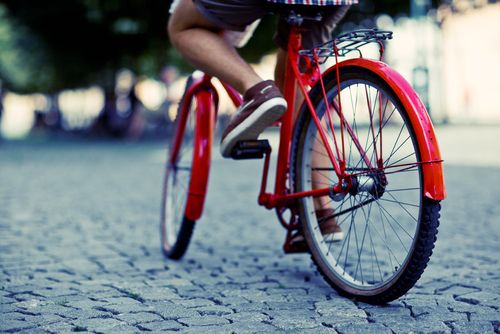Riding a bike – be they dockless bikes or the more conventional kind – has become an increasingly popular way to get around the city. According to Statista, the number of active cyclists in the United States has continued to climb. By 2017, it stood at 47.5 million after reaching 43 million just three short years earlier.
It’s not hard to see why bicycles have become more popular in recent years.
With concerns about climate change continuing to grow, bicycles provide users with an environmentally-friendly way to move around the urban jungle. Some people also prefer bikes because of the health benefits they offer. Others use bikes because they provide a cost-effective mode of transportation.
That last reason is particularly important to riders who are trying to save as much money as they can. It’s also why relatively new options for bikes have recently emerged.
You no longer have to purchase a bike to ride one. These days, there are bike-sharing programs designed to get more people cycling.
For the most part, bike-shares offer two types of bicycles. They have docked bikes and the dockless variants.
What Are Docked Bikes?
The first thing to note about both docked and dockless bikes is that they belong to the same ride-sharing system. Riders can essentially choose which one to use for their upcoming trip.
Docked bikes have been around longer. The early ancestors of docked bikes worked quite differently from the ones being widely used today. According to Wikipedia, the precursor to the first generation of docked bikes involved users going to a specific location to pick a bike to use. They would then have to return the bike they borrowed to that same location.
The first generation white bikes offered a bit more freedom, because riders could leave their borrowed bikes anywhere. However, the issue that plague them is that finding a bike could prove difficult for riders in certain parts of the city.
Second generation bikes mirror the docked bikes of today more closely. These bikes are unlocked with the aid of coins. Users would have to return the bike to the original station if they want the coin back that can be used to unlock the bike again.
The second generation bikes have now given way to the third generation docked bicycles that are widely used today. These docked bikes work in a simple way.
A user will head over to a nearby docking station to check out a bike. Since the bikes are only released by a machine, the would-be users must be able to identify themselves first. They can do this by using apps and/or cards.
Users may also be asked to provide a deposit or pay a subscription fee before they can start using docked bicycles. Since riders of these bikes are more easily identifiable, they will be responsible if the two-wheeler they use sustains any kind of damage or is lost at any point during their trip.
As their name suggests, these bikes must be returned to docks.
The good news is that there are multiple docks designed to hold them. Users simply have to find another dock that belongs to the same system. They don’t have to bring them back to the dock they originally took them from, although that is an option.

What Are Dockless Bikes?
The latest evolution of the bike-sharing system comes in the form of dockless bicycles. Instead of docks, these bikes are secured using locks that are built onto the frame. You will typically need an app to gain access to these bicycles.
That same app is going to be crucial for finding dockless bikes too. With no docks to go to, smartphone users will have to rely on the app, as well as GPS, to find a bike in their vicinity.
Plenty of people have been showing their affinity for dockless bicycles. They have become more widespread in major metropolitan cities all over the globe. Dockless bikes have become especially popular in China, as millions of people use them on a regular basis.
What Are the Pros of Using Dockless Bikes?
Convenience
The main advantage of using dockless bikes is that they are remarkably convenient.
Riders no longer have to worry about going out of their way just to find the right spot for the bikes they have used. They can leave them at the nearest bike rack or even just along the sideway, as long as they do not impede foot traffic.
People can leave them like that because they know other users will be able to find them. You can also go ahead and continue using the dockless bicycle all the way up to your destination.
Cost
Dockless bicycles stand out as a reasonable alternative for commuters who are seeking a more affordable way to get around town. That is especially true for people who cannot afford to purchase bikes of their own.
Depending on how you intend to use a dockless bike, you can end up saving a lot of money.
As noted by Alta Planning and Design, a single trip on a dockless bicycle can be surprisingly inexpensive. They can be as low as $1. If you are heading somewhere to meet up with friends, you can use a dockless bike to head to the venue and secure a ride home there.
Instead of paying for cab, or a trip on an expensive trip via a ride-sharing service such as Uber or Lyft, you may just have to pay $1 total for your commute.
Impact on the Youth
A benefit of dockless bicycles that can be overlooked at times is that they are more likely to be used by younger individuals. An article from Science Direct highlights the fact dockless bikes have become very popular among the youth.
That is an important benefit to dockless bikes because getting younger people to cycle is a huge positive as a whole. Bikes don’t make use of the type of fuel that can be harmful to the environment and they can also help younger people stay in better shape as they age.
What Are the Cons of Using Dockless Bikes?
Disorganization
The biggest issue related to dockless bicycles is that they are not always properly put away by their users. Ideally, their users will reserve them for others by resting them inside racks or carefully placing them along sidewalks, but that does not always happen.
What happens instead is that the bikes are haphazardly left lying around wherever. They can end up being obstacles to both foot and road traffic.
Operators of dockless bicycles have attempted to mitigate this issue by incentivizing their customers with credits and points, which they can earn after they return the bikes to the appropriate parking spots.
Durability Issues
Given how they are handled by some users, dockless bicycles can sometimes end up in poor working condition rather quickly. If a rider gets into some kind of accident while using a dockless bike, it may sustain some form of damage that is not evident right away. As a result of this, another rider may use the bike without knowing that it is not functioning properly.
Things can get ugly from there. A malfunctioning bike can put riders at great risk while they are on the road. When you’re riding alongside a larger vehicle, such as a cement truck, you need to be able to put complete trust in the bike you’re using. If the bike’s brakes fail, or encounter any other kind of mechanical issue, you could end up injured or even worse.
Inconsistent Regulations
Dockless bikes can be considered as new entries into the domain of public transportation. As with anything new that has been made available to the public, there are kinks that still need to be worked out.
For example, regulating them is turning out to be a challenge. Cities and the companies that provide dockless bicycles are still figuring out how best to regulate those vehicles. It’s a good thing that those entities are working hard to manage those two-wheelers, but the problem is that there is still no unified set of rules and regulations to follow everywhere.
For those who have gotten used to the laws in one location such as California, it can be hard to suddenly get accustomed to new rules after they move or travel somewhere else.
How Do You Get a Hold of a Dockless Bike?
The process of finding and using a dockless bike is relatively simple.
First, you will need to download a special app. It’s up to you to decide which company’s dockless bikes and app you want to use.
According to RideGuru, the top companies that provide dockless bikes are LimeBike, Mobike, Ofo, and Spin. You’ll be able to tell those bikes apart by looking at their colors.
The rates for dockless bikes can vary, so make sure that you are aware of how much you need to pay before you sign up for a service.
Once you have selected the dockless bike company you prefer and downloaded their app, you can then move ahead to the next part of the process, which is finding a bike to actually use. You will hopefully be able to spot a nearby bike right away. However, if you are unable to, you can use your phone’s GPS to find one.
Find the bike and then open up your app. There should be some kind of “unlock” button there. Tap on it.
Next, look for a QR code on the bike. This should be located somewhere on the bike’s frame. Scan the QR code to unlock the bike.
You can now start riding the bike. You should be aware that you can be charged for every half hour or hour of use. Keep track of how long you are on the bike, so that you are not caught off-guard by how much you need to pay after your trip is completed.
Upon reaching your destination, find a good parking spot for the dockless bike and lock it up.

Tips to Remember When Using a Dockless Bike
Regardless of whether you’re riding a dockless or a more conventional bike, it is essential for you to follow certain tips to keep yourself as safe as possible on the road.
Before you even set out on your bike, read up on the laws in your area. There may be rules and regulations there that are not enforced anywhere else. It is your responsibility to find out what they are and follow them.
You should also avoid riding together with another person on your bike. Dockless bikes are designed to only hold one rider, so you should stick to that.
Don’t forget to put on your helmet as well. Lives are saved on a regular basis by the helmets cyclists wear during their trips.
You should also make an effort to avoid as many distractions as possible while you are using a bike. Avoid listening to anything that can prevent you from hearing the horn of an oncoming vehicle. Stay focused on the road.
Bikes can end up at the mercy of other vehicles on the road because of how much smaller and lighter they are, but as long as you are mindful of safety, you should be able to complete your ride with no issue.
Contact a Personal Injury Attorney in an Emergency
Unfortunately, there are some cases where it simply does not matter how careful you are. Accidents can still happen even if you take all the proper precautions.
Aside from the injuries you may sustain from a dockless bike accident, you also have to worry about the cost of your treatment, along with other expenses.
If you ever find yourself in the unfortunate position of being involved in a bike accident, do not hesitate to reach out to a personal injury attorney. Contact Batta Fulkerson to receive a free evaluation of your case, along with expert legal advice to ensure you receive the compensation due to you.




